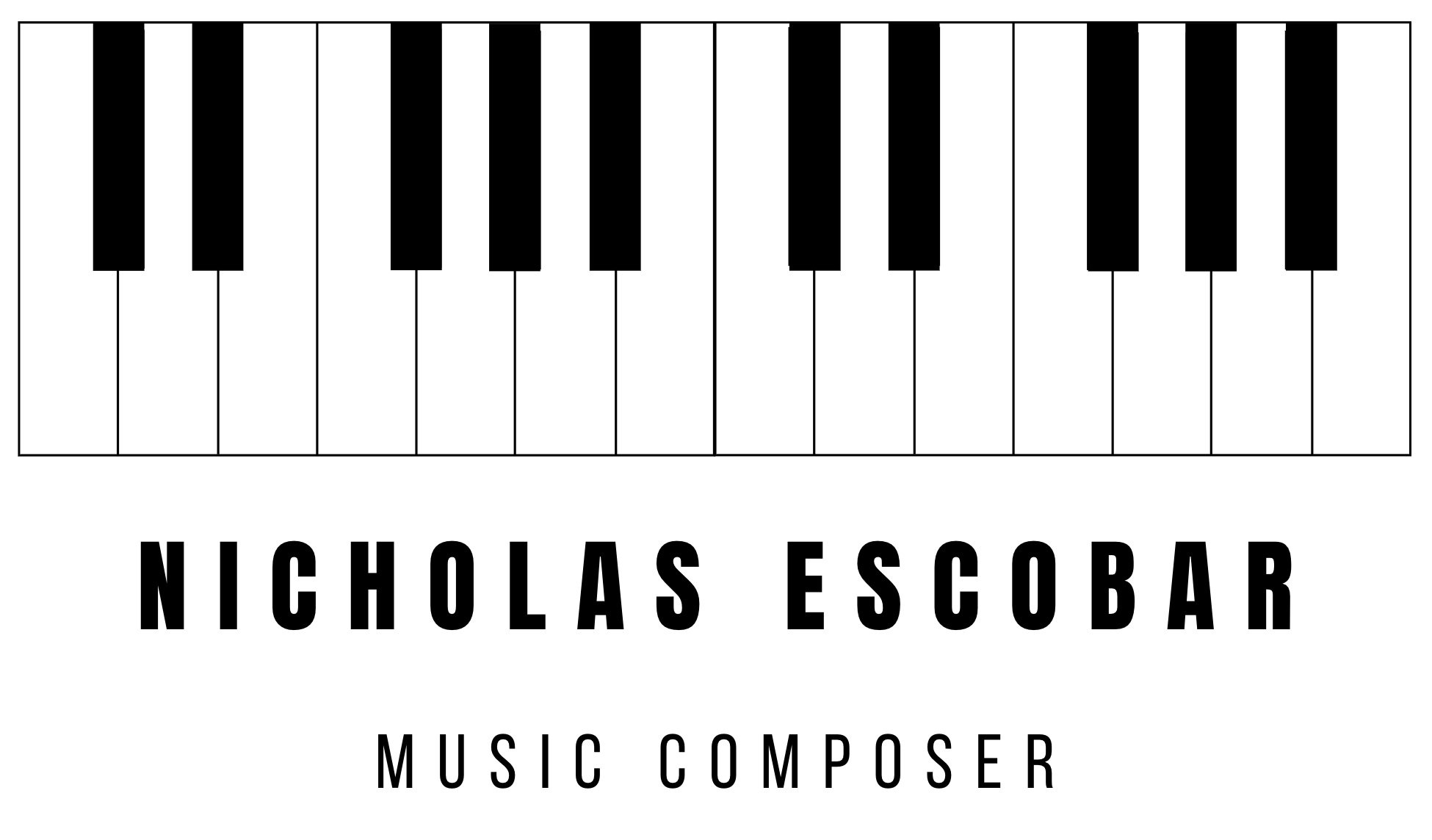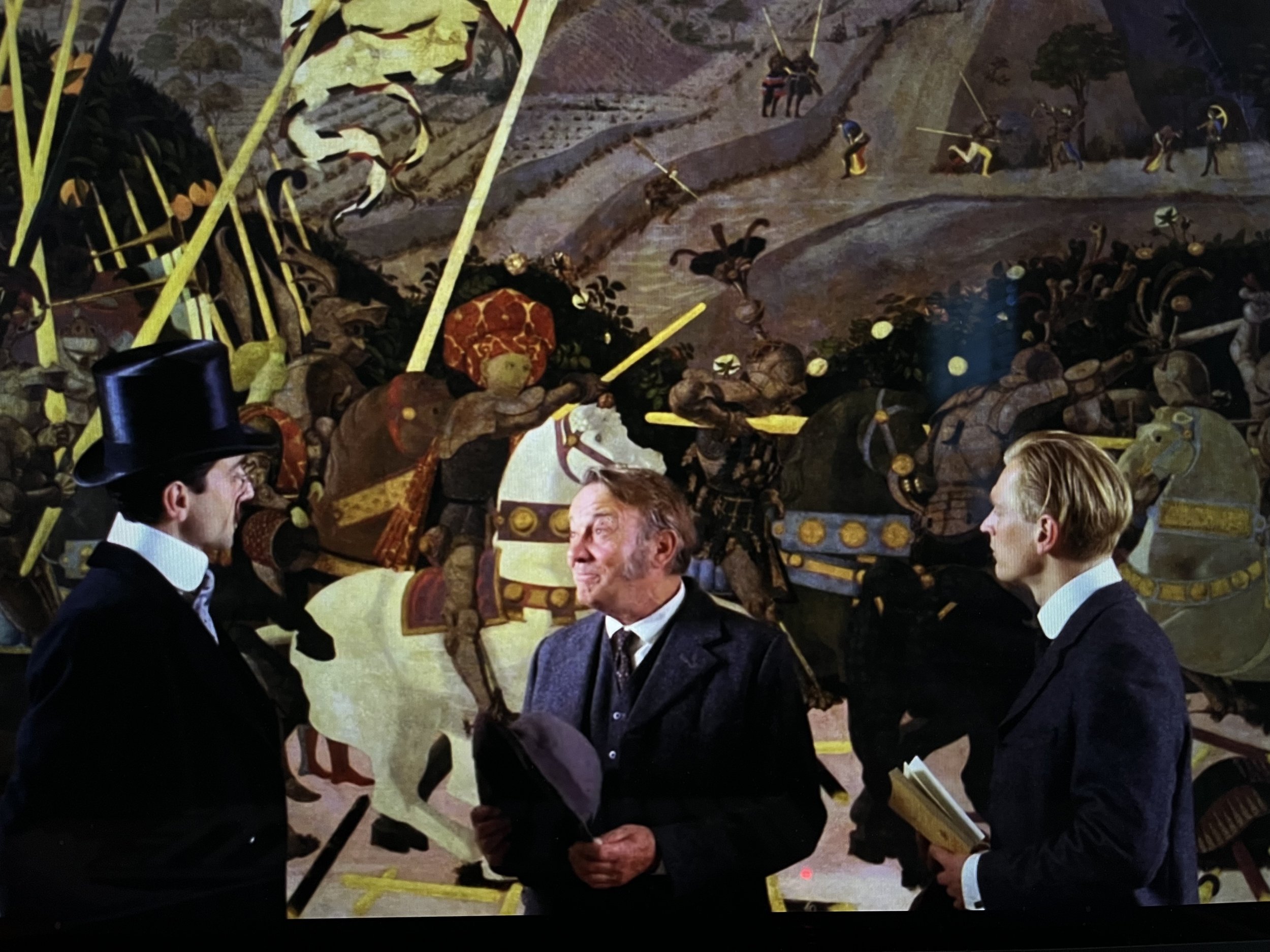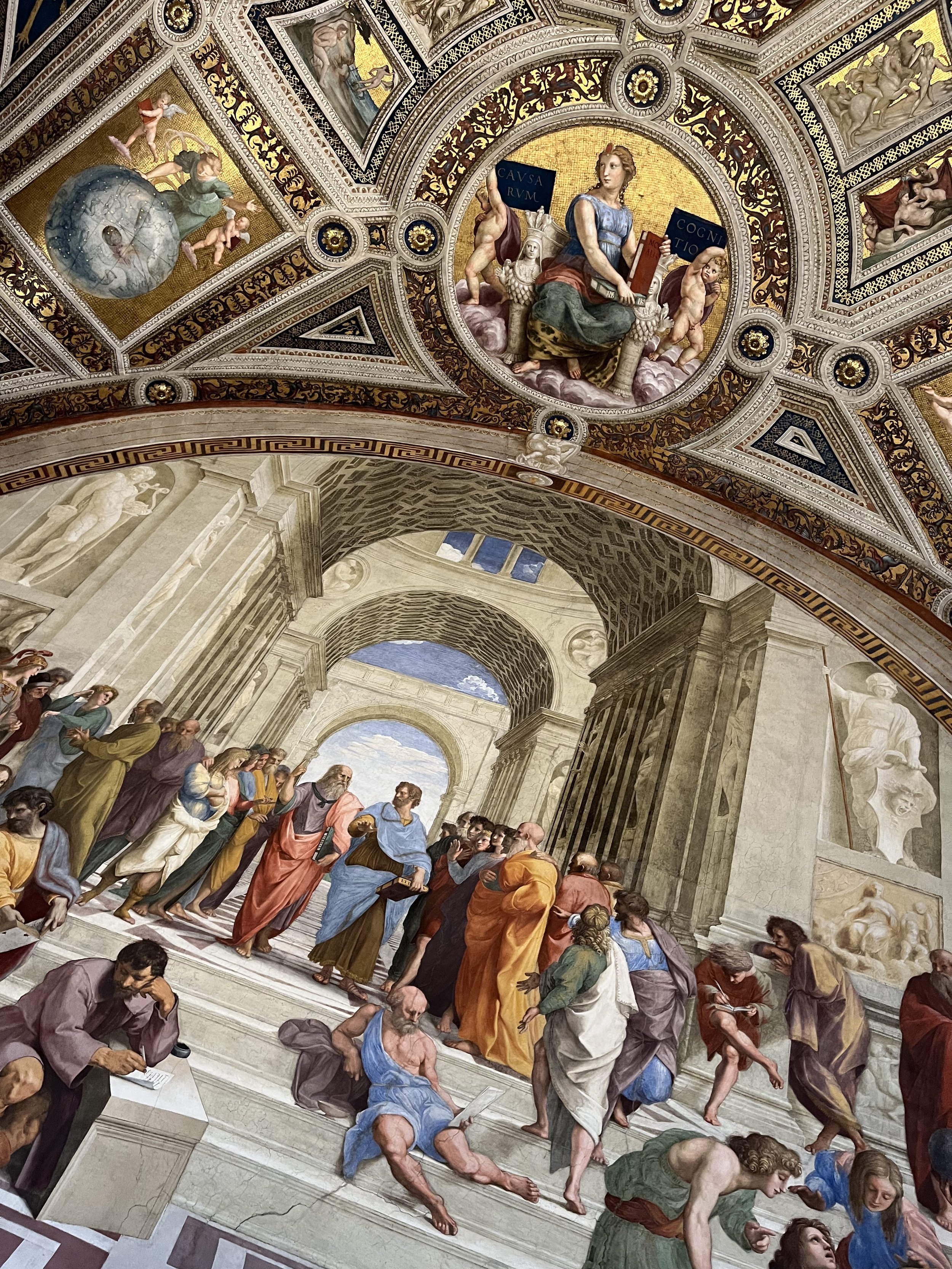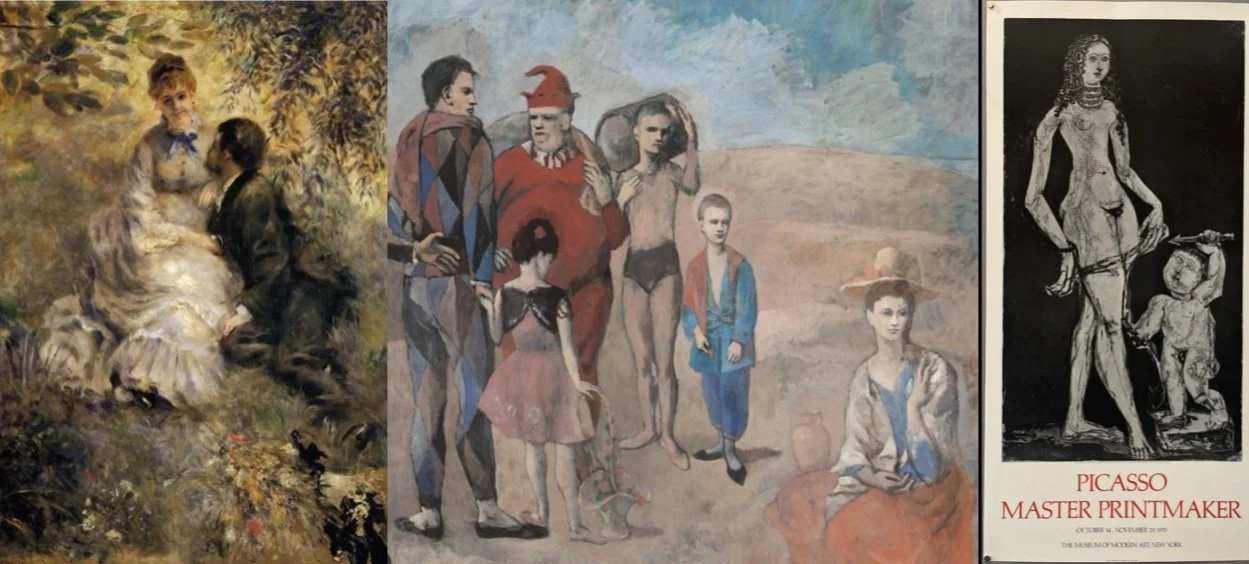Film Essay: The Art in "A Room with a View"
My family just got back from two weeks in Italy. It was my first time visiting the country. We went to Rome, Florence and Venice and it was an incredible experience. Before we left for the trip, I put together a list of films set in Italy to cinematically prep us. One of the films on the list was the 1986 Merchant Ivory film “A Room with a View”. A truly fabulous film that is beautifully photographed and wonderfully acted (Maggie Smith and Daniel Day Lewis are especially brilliant). The first 45 minutes take place in Florence and Fiesole (just outside of the city). The large majority of the rest is set in England. While we were in Florence, we visited a number of the filming locations like the Basilica of Santa Croce (where Michelangelo is buried) and the Piazza della Signoria. It was thrilling rewatching the film yesterday and recognizing all of these locations.
Something that I really noticed on the rewatch was the presence of Italian works of art in the England portion of the film. In this way, the specter of Lucy Honeychurch’s perspective-changing experience in Italy is ever-present 2000 miles away in England. There are an incredible amount of artworks on the walls of the residences in this film. Far too many to identify. I will just focus on three specific ones (and one bust).
The Battle of San Romano, Paolo Uccello (1438):
This work is actually a triptych, meaning that it is in three parts. I saw the central part at the Uffizi Gallery in Florence. The Uffizi Gallery actually makes a brief appearance in A Room with a View: in a wide shot of the Piazza della Signoria and when Lucy and George are standing by the Arno. Uccello’s work is a true masterpiece. I was especially taken by the depiction of the horses. It is also an incredibly large work. You feel as if you are being swallowed up by it. Enveloped by the violent battle between Florence and Siena. It depicts the leader of the Sienese mercenaries being un-horsed.
When I rewatched “A Room with a View”, there is. a scene during the England portion that takes place in the National Gallery in London. Day Lewis’s character Cecil meets with Mr. Emerson and George in front of a painting that seemed vaguely familiar. Turns out: it is another part of the Uccello triptych! It is widely agreed that the National Gallery is the first in the series (depicting the morning of the battle) and the Uffizi Gallery is second (depicting mid-day).
Mr. Beebe points out to George later in the film that it isn’t coincidental that George and Mr. Emerson found their way to Lucy Honeychurch again. They were in the National Gallery “looking at Italian art”. He says that George is “naturally drawn to things Italian, as are all of we”.
Uccello’s masterpiece successfully bridges Florence and London and Italy and England. The Uttizi work hovered unseen in the Florence portion of the film and it’s sibling featured prominently in the England portion. It is a wonderful artistic connection.
The scene in A Room with a View with Cecil, Mr. Emerson and George in front of the first part of the Uccello triptych
The second part of the triptych, housed at the Uffizi Gallery, This is the work I saw in person.
The School of Athens, Raphael (1509-1511):
Raphael staring at you.
My family and I went on a tour of the Vatican while in Rome and it was really spectacular. One of my favorite moments was seeing Raphael’s masterpiece “The School of Athens” in person. It is in a room filled with three other Raphael frescoes which was pretty overwhelming. I have seen images of “The School of Athens” my whole life (including in the syllabus for my A.P. European History class in high school) so to see it in person was surreal. I also learned more about the painting from our wonderful tour guide Gigi. He pointed out that Raphael painted himself into the right side of the fresco. He stares directly at the viewer with a moody look.
I noticed that in the house Mr. Emerson and George are staying in while in the English countryside, they have a print of “The School of Athens” above their fireplace. This once against represents a piece of Italian art present in the English setting, helping the bridge those two locations. George is also a philosophical man, overcome with an existential crisis. A repeated motif at the beginning of the film is George showing Lucy the symbol of a question mark. So, the present of “The School of Athens”, filled with philosophers and great thinkers makes perfect narrative sense.
Here you can clearly see The School of Athens situated above the fireplace in their house. Framed quite nicely with mat too.
A photo I took of The School of Athens. It really is a monumental painting.
Spring, Sandro Botticelli (1480):
This painting really blew me away when I saw it in person at the Uffizi Gallery. Botticelli is one of my favorite painters from this period. I especially love this work at the National Gallery of Scotland. Obviously at the Uffizi Gallery they have The Birth of Venus which was incredible to see in person. Spring also knocked my socks off. It is a majestic painting, filling up practically an entire wall. It depicts a mythological scene involving the creation of the goddess of spring. It also features Venus the goddess of love and beauty (prominently in the center) as well as the blinded Cupid above. Botticelli also, incredibly, painted 138 different types of real plants into the painting. A true artistic accomplishment.
This all works very nicely with A Room with a View, since it is a film that deals with love (both true and manufactured). The entire film Ms. Honeychurch tries to convince herself she is not in love with George, even after their passionate encounter in the Italian countryside of Fiesole. She is engaged to be wed to the chaste and pretentious Cecil and their relationship is entirely love-less. Botticelli’s work is present in the living room of the Honeychurch home, near to Lucy’s piano. We only really see it clearly in a couple shots, and even then only the bottom left of the print. The only way I recognized it was by the positioning of the various legs.
It is not a coincidence that this is the second work in the film that has a connection to the Uffizi Gallery in Florence. Through the production design, the film is creating visual links to Italy in the England sets. They are telling subconscious stories through artworks.
I would also like to point out one other small piece that appears beneath the Botticelli: what appears to be a bust of Ludwig van Beethoven. This carries narrative significance to the film. Early in the film, while in Florence, Lucy plays Beethoven’s Opus 111 on the piano. Mr. Beebe remarks that if she “ever takes to live as she plays, it will be very exciting both for us and for her.” And here Beethoven is in England, watching over her in the piano room. It is very fitting.
Botticelli’s work Spring housed at the Uffizi Gallery in Florence. Cupid is above, Venus is in the middle and the goddess of spring on the right side.
In the upper right of this screenshot you can see a frame with 8 different sets of legs. By their positioning and clothing, it is clear that this is a well made print of the Botticelli painting Spring.
Conclusion:
It was incredible visiting Italy. What an awe-inspiring place. I especially loved Florence and it was brilliant visiting the areas where A Room with a View was filmed. Through my experiences seeing art in Italy, I was able to make these art connections when watching the film again. The production designers for A Room with a View took great care to dress the sets in a way to create connections between the Florentine/Italian setting and the English one. And it works wonders.
If you haven’t seen A Room with a View before, I highly recommend watching it. A real masterpiece fit for the Uffizi Gallery (one might say).













